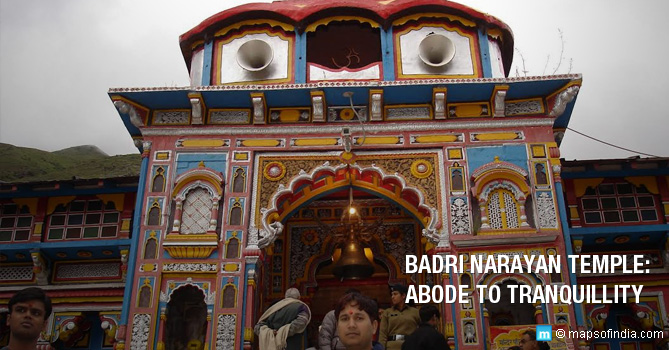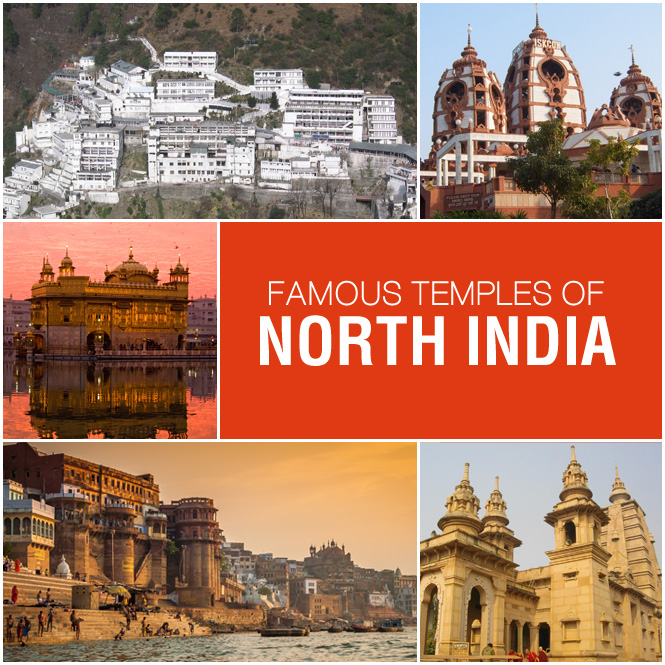In our journey through India’s best-known temples, we now take you to one of the most-visited pilgrim shrines in the country – the Badrinath Temple also called the Badri Narayan Temple, dedicated to the Hindu God of preservation – Vishnu. The temple is very highly regarded by the Vaishnavas or Vishnu worshippers and in general by all Hindus. It is the northern most of the Char Dhams – four sacred pilgrimages that all Hindus strive to undertake in their lifetime – Badrinath, Dwarka, Rameshwaram, and Puri. Each of these temples is dedicated to Vishnu or his incarnation Lord Krishna. Badrinath Temple is also one of the Chota Char Dhams – the four sacred places of worship for Hindus, located in the Garhwal Himalayas.
The Badrinath Temple, though located in the northern fringe of the country, is equally popular among the South Indian Hindus. It is one of the 108 Divya Desams – temples dedicated to Vishnu – as mentioned by the Azhvars or Tamil seers who sung praises of Vishnu. Each year the shrines records a footfall of about 10,00,000 pilgrims.
Location and Accessibility
The Badrinath Temple is located in the Chamoli district of Uttarakhand, in the town of Badrinath, on the banks of the Alaknanda River. Alaknanda is a major tributary of the River Ganges. The shrine is located at an altitude of 3,133 metres or about 10,248 feet amidst the tall and majestic peaks of the Himalayas.
Distance from
- Srinagar: 190 kilometres
- Rishikesh: 295 kilometres
- Mussoorie: 320 kilometres
- Haridwar: 320 kilometres
- Dehradun: 346 kilometres
- New Delhi: 535 kilometres
Getting to Badrinath
By Air – Jolly Grant Airport at Dehradun is the nearest airport. The 346 kilometres from Dehradun to Badrinath can be covered by taxis, public buses and private coaches that ply regularly.
By Rail – The nearest major rail junction is the one at Dehradun. The nearest rail connectivity, however, leads us to Rishikesh. From Rishikesh, again, you will need to board a bus or coach or catch a taxi to Badrinath.
By Road – Badrinath is connected with Delhi and most major cities in North India through excellent and frequent bus services. Despite the altitude roads are well-maintained and motorable.
History
The shrine of Badrinath is believed to belong to the age when Nara and Narayana (Man and Divine) came up here to meditate. It finds mention in the Vishnu Purana (believed to be composed in the 1st century CE). According to legend, this is where Lord Vishnu helped humanity understand that Nara (Man) and Narayana (Divine) are both aspects of his infinite self. Goddess Lakshmi, Vishnu’s consort, took the form of a badri tree to shelter him lending the place its name. This is where Narada, the divine sage, prayed and achieved divine grace. Narada is still believed to be meditating in these parts according to Hindu sentiments. The peaks that tower over the town of Badrinath are now called Nara and Narayana.
The next major story to unfold around Badrinath is from the times of the Mahabharata. Initially, King Pandu and his wife Madri are believed to have meditated here. The shrine was revisited by the Pandavas during their years of exile. In looking for divine grace and the meaning of Dharma, the Pandava brother Bheema met Hanuman, another son of the Wind God. Hanuman is also worshipped as a Hindu deity.
The modern shrine was built under the auspices of Adi Shankaracharya, the Hindu seer and spiritual leader. He set up the protocols for worship here and also handed the priesthood to Nambudri Brahmins from Kerala, his native land. The King of Garhwal commissioned the construction of the current temple in keeping with Adi Shankaracharya’s instructions.
The Shrines
The Badrinath temple has three distinct sections. The Garbha Griha is the innermost sanctum sanctorum where a Shaligrama idol of Badri Narayan is worshipped. It is said that this idol is of divine origin and was not created by man. Vishnu is depicted with his conch and discus and seen meditating here. The roof of the Garbha Griha is gold gilded from the outside. Next to the main altar, there are idols of Kubera, the demi-god of wealth, Nara, Narayana, Rishi Narada, and Uddhava (friend of Krishna).
Other shrines in the temple complex are dedicated to Mahalakshmi (Badri Narayan’s consort), Nava Durga (9 forms of Durga – considered to be Badri Narayan’s sister), Lakshmi-Narasimha (another incarnation of Vishnu) and Garuda (King Eagle – Badri Narayan’s familiar or ride).
Since Adi Shankaracharya played a key role in the construction of the shrine, later devotees added a shrine dedicated to him. There are also shrines dedicated to Ramanujacharya and Vedanta Desika, South Indian seers of the Vaishnava school who had made these shrines very popular centuries ago.
Apart from the Garbha Griha, the Darshan Mandap and the Sabha Mandap have been built for the pilgrims.
Famous For
A visit to the Badrinath Temple is a sacred pilgrimage – one that every Hindu dreams of. The breathtaking Himalayas make the arduous journey a pleasure to undertake. Lord Badri Narayan and Mahalakshmi hold out the promise of good health and eternal prosperity to all the devotees who come here. In Badrinath Temple, do not miss out the special prayer offered to Kubera – the demigod of wealth. Your money is sanctified at Kubera’s altar and is returned to you for financial well-being.
Another notable attraction of the temple is Taptkund – the hot water springs right on the banks of the freezing Alaknanda River. The springs are believed to contain healing minerals with restorative properties. It is highly recommended that pilgrims take a dip in the hot waters of these springs, known for their restorative properties.
Visitor Information
The best time to undertake a pilgrimage to the Badrinath Temple is between May and October except perhaps the monsoons when rain and landslides pose the risk of being stuck en route. In winters, Badrinath and all the surrounding regions experience heavy snowfall and very low temperatures making the place impassable.
On Vijaya Dasami, the last days of Navratri in October, the temple is shut down for winter after a grand puja. The temple reopens on Vasant Panchami in April. In the meanwhile, the pujas are held at Jyotirmath. The Akhanda Jyoti (inexhaustible lamp) is kept burning through the winter. The annual festival of the Temple is held in the month of June.
Mobile App for Badrinath Yatra
‘Shubh Badrinath Yatra’, a mobile application to provide information of the pilgrimage between Joshimath and Badrinath. The Chief Minister of Uttarakhand Harish Rawat launched the mobile application on 6 October 2015. According to the officials, when the users will be online, the application will automatically detect them and will give them all the required information from that place.
Read More





